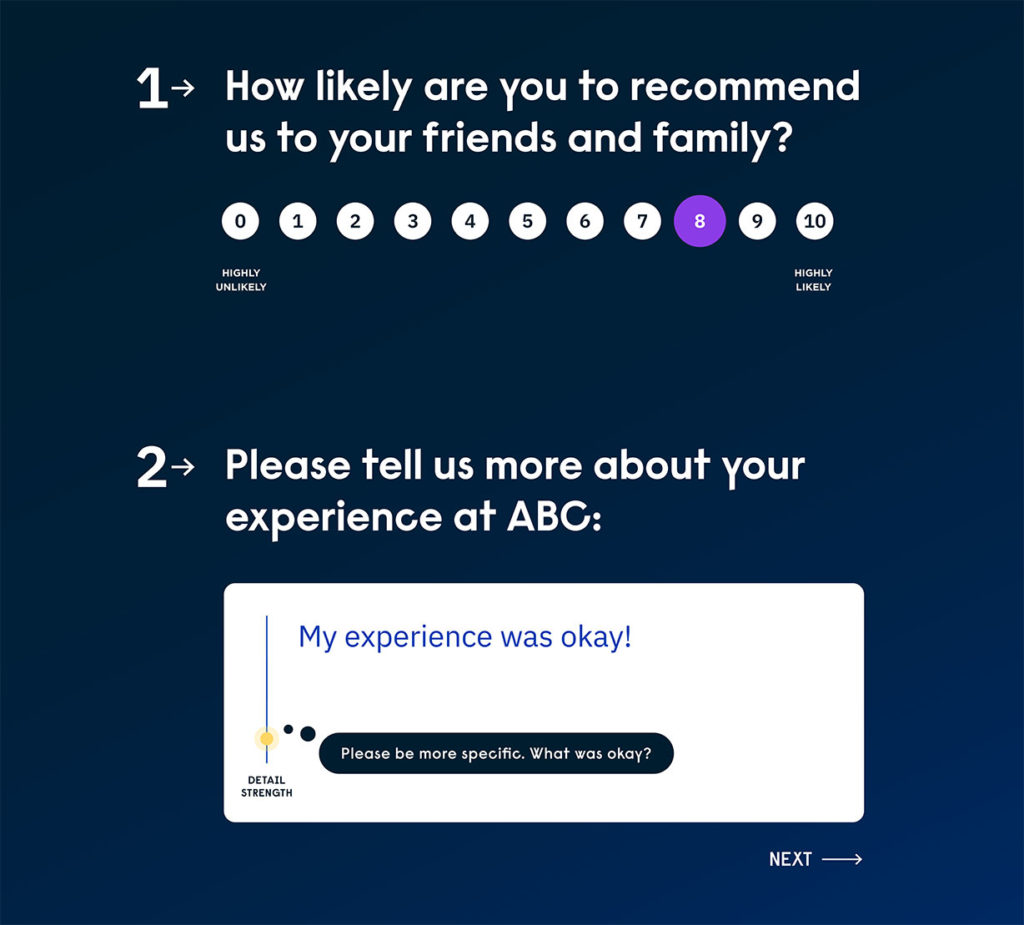Author: Jim Katzman, Principal, CX Strategy & Enablement
The most ambitious companies know that it’s not enough to be loved ‘just’ by their existing customer base. Think about brands like Ritz-Carlton; even if you haven’t stayed at a Ritz before, I bet high quality and a stellar brand reputation come to mind the moment you hear the name. This sort of prestige isn’t just good for prestige’s sake, either—a great reputation preserves your customer base, creates a sense of shared identity, and allows you to attract and retain new business.
A great CX reputation preserves your customer base, creates a sense of shared identity, and allows you to attract and retain new business.
While a lot of the companies that have reputations like these have benefited from time and history, that doesn’t mean your brand has to wait 100 years to build that rep too. Believe it or not, Google is just 22 years old, but its brand is pretty much synonymous with the entire internet. Customer experience initiatives, specifically Experience Improvement (XI) programs, give organizations the tools they need to build up a great customer experience (CX) reputation expediently, which also expedites attracting and keeping a great customer base. Let’s get into it!
What We’ll Discuss Today
- How Customer Experience Supports Brand Reputation
- The Tools of the Trade
- How to Elevate Your Brand Reputation
How Customer Experience Supports Brand Reputation
When used properly, CX tools can transform virtually any facet of a business, but how does that factor into improving or reinventing brand reputation? For starters, one of the first major reputation building blocks CX tools can help with is consistency. This element is key to the reputations that the world’s most successful companies enjoy. You can acquire or maintain that reputation yourself by listening to both customers and employees, then identifying gaps in your experience consistency. CX capabilities like social and market listening can make you aware of which locations or services might be lacking, after which you can take
steps to ensure they’re up to par with the rest of your brand.
A consistent brand experience goes a long way toward brand reputation. In fact, it can reduce the need to use advertising to defend your brand. You don’t need to watch a Tesla commercial to know that the company is well-known for its vehicles’ innovation and its customer service. Tesla and companies like it have worked hard to create that reputation through building their brand expectations.
This isn’t to say that only ineffective companies advertise, but it is a testament to how much better reputations are at sticking in people’s minds than the latest ad jingle (to say nothing of the idea that many large brands advertise purely to sweep operational inconsistencies under the rug). Additionally, those organizations that have established brand equity can use advertising to tout innovation and new offerings.
An excellent reputation also helps brands achieve something potentially even more powerful than consistency: an air of exclusivity. To be clear, in this context, “exclusivity” doesn’t refer to the notion of only accepting certain customers. Rather, in a CX sense, exclusivity refers to customers feeling that you provide a level of product and service excellence they cannot get anywhere else. This is a core concept of Experience Improvement, and it’s an amazingly powerful way to both retain existing customers and rapidly create new business for yourself.
Tools of the Trade
Now that we’ve reviewed how customer experience can help you get or maintain the reputation you need for marketplace leadership and new business, it’s time to delve a little deeper and talk about what some of these tools and methods actually are. I’ll also take you through some best practices I’ve seen in my time as a CX practitioner, and how you can put them to good use in a fiercely competitive business landscape.
The first method I would suggest is to listen— early, often, and across multiple channels and audiences. It wasn’t very long ago that a survey was the only way for companies to listen. Now, though, there are tools that bring customer voices together and analyze them from every possible angle. These methods include:
- Social listening
- Review site and chat listening
- Targeted market research
- Competitor and market listening
- Employee listening
- Surveys and microsurveys

The second toolset you’ll need is a means of filtering the noise out from these channels. Consider which audiences are most relevant to your CX program goals and hone in on the moments that matter the most. Use your tools (text analytics, sentiment analysis, driver analysis) to amplify the strongest signals and understand the impact of customer compliments (what’s working well) and customer concerns (what’s causing friction). That context will help you learn how to fix and/or enhance your CX reputation.
The last best practice to bear in mind is to think about your brand’s promise as an ever- evolving initiative. Yes, Ritz-Carlton, USAA, and Amazon are all pretty entrenched in their respective brands, but they never rest on their laurels and lose their way. These brands innovate with new products and services, and continually push the envelope to get better. Keep listening, keep acting, and keep validating. That’s what creates a good reputation in customers’ minds and what keeps them coming back.
Elevating Your Brand Reputation
Consistently driving Experience Improvement is critical to improving your brand’s reputation. It’s also a better way to do so than advertising or other overused methods. Customers may think about using your brand after seeing an ad, but they’ll only stay with you and recommend you to others if the promise meets the expectation. The road to a better reputation doesn’t have shortcuts, either—you need to listen, wade through the noise, and take meaningful action on the moments that matter most to your customers and your business.
We all protect and promote our personal reputations. The same train of thought applies to how we run and promote our businesses.
We all protect and promote our personal reputations. The same train of thought applies to how we run and promote our businesses. Applying this holistic, interpersonal mindset to customers will make them feel valued as human beings, not just as clientele. A brand that creates bold, human experiences for its customers will be known and beloved as a marketplace leader, enabling you to attract new customers, retain your existing base, cross-sell to retained customers, and lower cost to serve. All of that is the true value of a stellar CX reputation.
You can download this piece as a PDF file by clicking the button below!
Download


